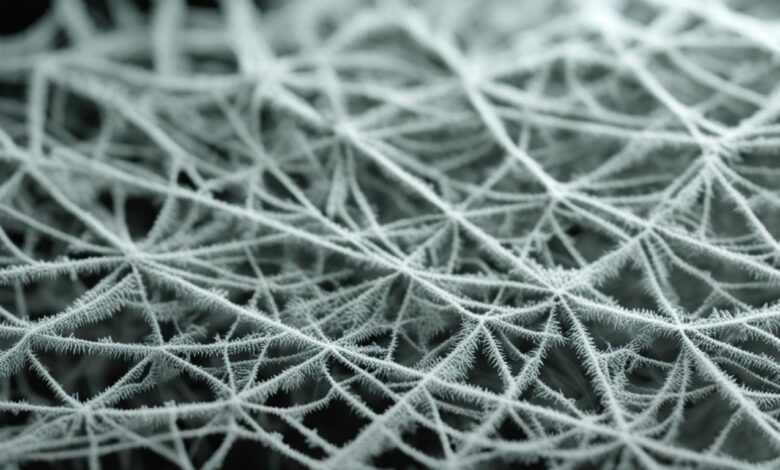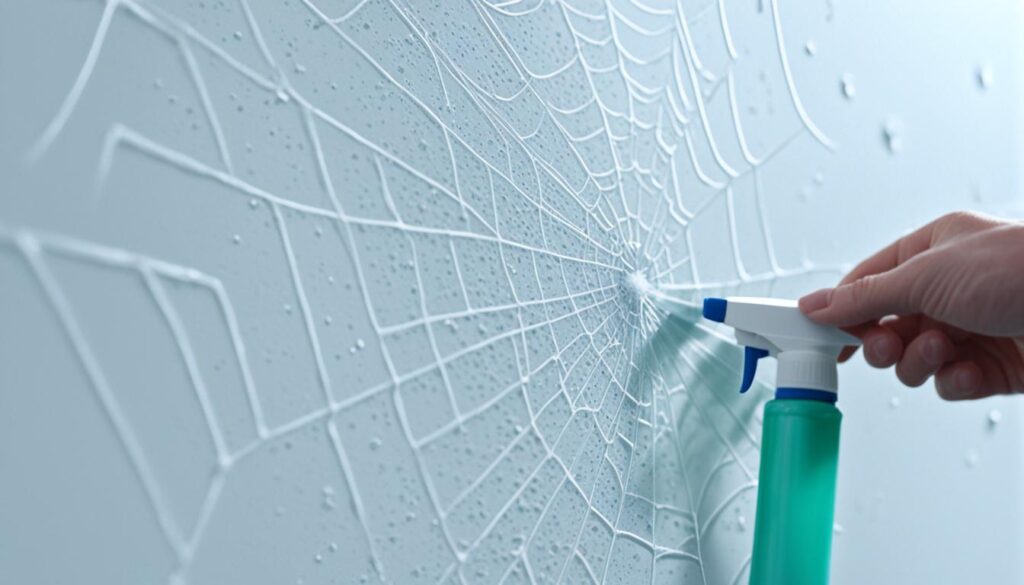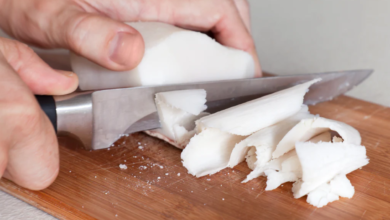Cobweb Mold: Understanding and Dealing with It

Cobweb mold, or Hypomyces rosellus, is a dangerous fungal pathogen for mushroom growers. It can quickly destroy entire mushroom crops if not addressed promptly. This guide will help you identify, prevent, and treat cobweb mold effectively.
Key Takeaways
- Cobweb mold, also known as Hypomyces rosellus or Dactylium, is a common and aggressive fungal pathogen that can quickly destroy mushroom crops.
- Proper identification and early detection of cobweb mold are crucial to prevent its rapid spread and mitigate potential crop losses.
- Maintaining optimal environmental conditions, such as proper airflow and humidity levels, is essential for preventing cobweb mold outbreaks.
- Sterilization and sanitation practices are vital in managing cobweb mold contamination and preventing its recurrence.
- Effective treatment options, including the use of hydrogen peroxide, can help mitigate the impact of cobweb mold on mushroom cultivation.
What is Cobweb Mold?
Identification and Characteristics
Cobweb mold is a parasitic fungus that attacks other fungi, including cultivated mushrooms. It appears as a dense, cottony white or gray mat resembling spider webs. This mold can spread quickly, covering an entire substrate in just 48 hours.
It has a thin, wispy, and grayish or black appearance, similar to cobwebs or dust bunnies. This differs from healthy mushroom growth, which is light, fluffy, and white. Growers must learn to spot cobweb mold to protect their crops.
Cobweb mold is rare in well-maintained mushroom setups, especially those using RyzaPods. However, it can thrive in still air, low oxygen, and high humidity environments. It often appears during late incubation or just before fruiting.
“Cobweb mold can form in as fast as 24 hours, while mushroom mycelium takes days to double in growth.”
This mold spreads quickly by fragmenting and growing from multiple points on the casing layer. Its rapid growth is due to favorable environmental conditions. The spores don’t become airborne early unless disturbed.
Cobweb Mold vs. Mycelium
Telling cobweb mold from healthy mushroom mycelium is key for successful mushroom growing. They may look alike at first. But there are important differences growers must know.
Healthy mycelium is bright, pure white, and grows slowly. Cobweb mold is dull, grayish-white, and spreads rapidly on the substrate surface. It’s aggressive and makes millions of spores quickly.
Mycelium grows embedded within the substrate. Cobweb mold grows on the surface, looking like wispy cobwebs. This makes cobweb mold easier to spot early.
| Cobweb Mold | Mushroom Mycelium |
|---|---|
| Dull, grayish-white color | Bright, pure white color |
| Grows rapidly on the substrate surface | Grows slowly and is embedded within the substrate |
| Aggressive and produces millions of spores | Controlled growth as part of natural mushroom development |
Knowing these visual signs and growth patterns is crucial. It helps in identifying cobweb mold early. This allows growers to act fast and save their mushroom crop.
Preventing Cobweb Mold
Environmental Conditions
Optimal conditions are key to stopping cobweb mold in mushroom growing. This mold thrives in warm, humid, and still air. Keep temperature and humidity in check for your mushroom type. Good airflow helps create an environment where cobweb mold can’t thrive.
Mushrooms need 85% to 95% humidity. However, higher levels can lead to cobweb mold growth. This mold can spread quickly, covering large areas in just 1-2 days. Mushroom mycelium grows more slowly in comparison.
Regular monitoring and adjusting these factors is crucial. This helps maintain healthy mushrooms and prevents cobweb mold outbreaks.
| Environmental Factor | Optimal Range for Mushroom Growth | Conditions Favoring Cobweb Mold |
|---|---|---|
| Temperature | Varies by mushroom species | Warm temperatures |
| Humidity | 85% to 95% | Excessive humidity above 95% |
| Airflow | Adequate ventilation and air exchange | Stagnant, poor air circulation |
Spotting cobweb mold early is vital for effective management. Too much moisture in the substrate can signal potential mold growth. Check regularly for changes in how the substrate looks.
To prevent mold, sterilize equipment and use quality spawn and substrate. Keep humidity between 85% and 95%. These steps will help protect your mushroom crop.
Sterilization and Sanitation
A clean, sterile environment is vital for preventing cobweb mold in mushroom growing. Good sterilization and sanitation practices reduce contamination risk. These practices ensure your mushroom operation thrives.
Thoroughly sterilizing or pasteurizing all substrates before inoculation is crucial. This step kills contaminants and spores that could cause unwanted fungi growth. Thoroughly clean and disinfect all equipment, work surfaces, and growing areas too.
Good personal hygiene is key to preventing cobweb mold. Wash your hands often. Wear clean clothes and gloves. Work in a clean, controlled space.
Early detection and prompt action are vital when dealing with cobweb mold. Inspect your growing area regularly. Address any contamination signs quickly to protect your mushroom crop.

“Proper sterilization and sanitation are the first line of defense against cobweb mold in mushroom cultivation.”
Identifying Cobweb Mold Outbreaks
Spotting cobweb mold early is vital in mushroom growing. This fast-growing fungus can quickly take over a substrate. Look for cotton-like, grayish-white growth spreading across the mushroom substrate.
Check your mushroom beds and fruits often. Cobweb mold usually appears in later flushes. Its spores can hide in the casing layer until conditions are right.
Act fast when you see this mold. It’s crucial to save your mushroom crop. Cobweb mold has thin, see-through hyphae, unlike healthy mushrooms’ thick mycelium.
This contaminant grows fast. It can cover a substrate in 1-2 days. Stay alert to catch it early.
Environment affects cobweb mold growth. High humidity (over 90%) and warm temps (above 23°C) help it thrive. Poor air flow also contributes to its spread.
Keep temperature, humidity, and ventilation in check. This helps prevent and control cobweb mold in your mushroom setup.
“Catching the problem early, before the mold has a chance to proliferate, is the best way to ensure a successful mushroom harvest.”
Stay watchful for cobweb mold signs. Quick action can stop a full outbreak. Use proper cleaning, environment control, and targeted treatments.
These steps help beat this tough fungus. They also protect your mushroom crops’ quality.
Dealing with Cobweb Mold Contamination
Isolation and Quarantine
Swift action is crucial if cobweb mold appears in your mushroom cultivation. Immediately separate and isolate any contaminated substrate or fruiting bodies. Keep them far from unaffected areas to prevent the spread.
Cobweb mold, or Cladobotryum mycophilum Type 2, is an aggressive pathogen. It grows and releases spores rapidly, developing colonies in just six days. Infected mushrooms quickly rot due to the Cladobotryum mycelium.
Quick response is vital to prevent total crop loss. An untreated patch in the first flush can destroy the entire second flush. Isolating affected areas stops the mold from causing further damage.

Increase crop checks once cobweb mold is found. Don’t water untreated crops to slow mold growth. Carefully apply salt to affected areas to prevent spore spread.
Treatment Options
Cobweb mold outbreaks require a multi-faceted approach. Adjusting environmental conditions is crucial. Lowering temperature and humidity, plus increasing airflow, can create an unfavorable environment for mold growth.
These changes may slow or stop cobweb mold spread. The effectiveness depends on the mushroom species’ tolerance.
Temperature and Humidity Control
Cobweb mold, like Dactylium dendroides, thrives in moist, organic-rich environments. Optimal humidity levels between 85% to 95% help prevent its growth.
Excessive humidity often causes cobweb mold in mushroom setups. The mold can cover large substrate areas within 24 to 48 hours.
Temperature control is also vital. Lowering temperatures creates an unfavorable environment for cobweb mold. It prefers warmer conditions.
Airflow and Ventilation
Proper ventilation is key in controlling cobweb mold. Mushrooms emit carbon dioxide that needs removal through adequate airflow.
Poor ventilation leads to gas buildup, encouraging mold growth. Increased airflow disrupts the mold’s growth cycle and prevents spreading.
Use fans, air filters, or optimize your growing area layout. This ensures proper air circulation.
These adjustments create an environment where cobweb mold struggles to grow. Your mushrooms can thrive with minimal contamination risk.
Remember, early detection and quick action are crucial. They’re key to managing cobweb mold outbreaks effectively.
Fungicidal Treatments
Severe cobweb mold cases may require approved fungicides. Choose products designed for mushroom cultivation. Many commercial fungicides can harm delicate mushroom mycelium.
A diluted hydrogen peroxide solution is a common treatment. It can “melt” cobweb mold without damaging mushrooms. Hydrogen peroxide is safe and versatile for combating cobweb mold outbreaks.
Other cobweb mold fungicides are available for mushroom farms. These chemical treatments eliminate mold while preserving mushroom mycelium health.
Follow manufacturer’s instructions when using fungicidal treatments. Proper application and timing are crucial. This ensures both mushroom and cultivator safety.
Understanding mushroom cultivation needs and fungicide options is key. Growers can effectively fight cobweb mold outbreaks. This helps maintain a healthy, thriving mushroom crop.
Cobweb Mold: Understanding and Dealing with It
Cobweb mold is a dangerous fungal pathogen in mushroom cultivation. It’s scientifically known as Hypomyces rosellus and is a common threat to growers. Understanding this mold is crucial for a successful harvest.
This mold looks thin, wispy, and cobweb-like. It can spread quickly, covering a crop in just 48 hours. Its rapid growth is due to its ability to produce millions of spores.
Proper conditions are key to preventing cobweb mold outbreaks. Mushrooms need high humidity, but too much can encourage mold growth. Stagnant air and warm temperatures also help the mold thrive.
Regular inspections are vital for early detection and management. Using clean equipment and high-quality spawn can reduce the risk of infestations. Maintaining proper humidity levels is also important.
If mold appears, isolate contaminated materials immediately. Adjust environmental conditions to prevent its spread. Use fungicides cautiously, as not all are suitable for mushroom growing.
Understanding cobweb mold helps growers protect their crops. Swift action and prevention strategies are essential. Vigilant monitoring and strict sanitation practices are key to success.
“Cobweb mold can decrease the overall yield, size, and quality of the mushrooms produced in a crop.”
Conclusion
Cobweb mold is a tough foe for mushroom growers. But with knowledge and action, farmers can shield their crops. Keeping the right conditions, cleaning thoroughly, and watching for early signs are key.
Research shows some fungicides work well against cobweb mold. These include Prochloraz-manganese chloride complex, Trifloxystrobin, tebuconazole, and Difenoconazole. Using these treatments can help protect mushroom crops.
Growers must stay alert and use the latest methods. This approach helps overcome cobweb mold challenges. It leads to better productivity and profits.
Ongoing learning and teamwork are crucial. These practices ensure the mushroom industry’s success. They help meet the rising global demand for these healthy fungi.
FAQ
What is cobweb mold?
Cobweb mold is a fungal pathogen that threatens mushroom crops. It’s also known as Hypomyces rosellus or Dactylium. This aggressive mold can quickly destroy entire mushroom harvests if not controlled.
How can I identify cobweb mold?
Cobweb mold looks like a thick, cottony mat. It’s white or grayish and resembles spider webs. This mold spreads fast, covering entire substrates within 48 hours.
How does cobweb mold differ from healthy mushroom mycelium?
Healthy mycelium is bright white and grows slowly. Cobweb mold is grayish-white and spreads quickly. It grows on the substrate’s surface, while mycelium grows within it.
What environmental conditions favor the growth of cobweb mold?
Cobweb mold thrives in warm, humid, and stagnant air. To prevent outbreaks, maintain good temperature, humidity, and airflow in growing areas.
How can I prevent the introduction and spread of cobweb mold?
Use proper sterilization and sanitation practices. Sterilize all substrates, equipment, and work surfaces thoroughly. Maintain good personal hygiene to reduce contamination risk.
How can I detect cobweb mold early?
Inspect mushroom substrates and fruiting bodies regularly. Look for cotton-like, grayish-white growth that spreads quickly across surfaces. Early detection helps prevent outbreaks.
What should I do if I detect cobweb mold?
Immediately isolate any contaminated substrate or fruiting bodies. Keep them far from unaffected areas. This quarantine approach is crucial for containing outbreaks.
How can I treat cobweb mold outbreaks?
Adjust environmental conditions to combat cobweb mold. Lower temperature and humidity levels, and increase airflow. For severe cases, use approved fungicides like diluted hydrogen peroxide solutions.




